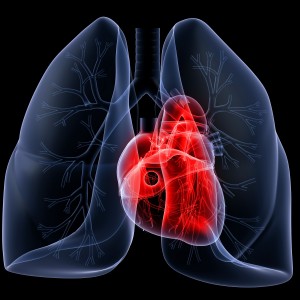Elevated Concentrations of Circulating CXCL12α Predicts Poorer Survival in Patients with Pulmonary Arterial Hypertension

 Recent work in preclinical models suggests that signaling via the pro-angiogenic and pro-inflammatory cytokine, CXCL12 (SDF-1), plays an important pathogenic role in pulmonary hypertension (PH). Now a research team found that elevated concentrations of circulating CXCL12α predicts poorer survival in patients with Pulmonary Arterial Hypertension (PAH) and that elevated circulating CXCL12α is risk factor for death that could potentially be included in a prognostic model and guide therapy. The results are published in the journal PLOS One.
Recent work in preclinical models suggests that signaling via the pro-angiogenic and pro-inflammatory cytokine, CXCL12 (SDF-1), plays an important pathogenic role in pulmonary hypertension (PH). Now a research team found that elevated concentrations of circulating CXCL12α predicts poorer survival in patients with Pulmonary Arterial Hypertension (PAH) and that elevated circulating CXCL12α is risk factor for death that could potentially be included in a prognostic model and guide therapy. The results are published in the journal PLOS One.
Pulmonary arterial hypertension (PAH) is a life-threatening condition that causes increased pulmonary vascular resistance that is mediated by structural remodeling of the pulmonary vasculature, endothelial dysfunction and inflammation, ultimately leading to right ventricular dysfunction.
[adrotate group=”4″]
The precise molecular mechanisms that cause these vascular abnormalities have been unclear, however, recent evidence suggests CXCR7, a receptor for the pro-angiogenic chemokine CXCL12 (SDF-1), was selectively up-regulated in primary human pulmonary microvascular endothelial cells in response to hypoxia but remained unchanged in hypoxic systemic microvascular cells.
In the study entitled “Elevated Plasma CXCL12α Is Associated with a Poorer Prognosis in Pulmonary Arterial Hypertension,” Paul Mcloughlin from the School of Medicine and Medical Science, UCD Conway Institute, University College Dublin, in Dublin, Ireland, investigated if circulating concentrations of CXCL12α were elevated in patients with PAH and related to mortality.
[adrotate group=”3″]
The researchers collected plasma samples from patients with a diagnosis of idiopathic pulmonary arterial hypertension (IPAH) and PAH associated with connective tissue diseases (CTD-PAH) attending two pulmonary hypertension referral centres (n = 95) and from age and gender matched healthy controls (n = 44). All patients were monitored for five years.
Results revealed that elevated concentrations of circulating CXCL12α in PAH predicted poorer survival. Furthermore, elevated circulating CXCL12α was an independent risk factor for death. Based on these results, the research team concluded that elevated circulating CXCL12α could potentially be included in a prognostic model and guide in clinical practice.
However, according to the researchers more studies involving larger patient cohorts are necessary in order to establish the reliability and overall usefulness of circulating CXCL12α levels in predicting survival in patients with PAH.







